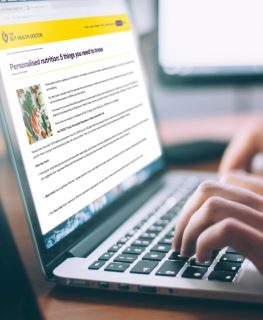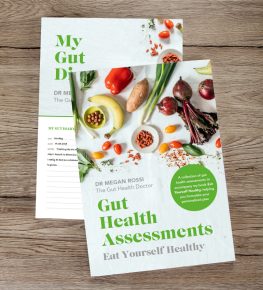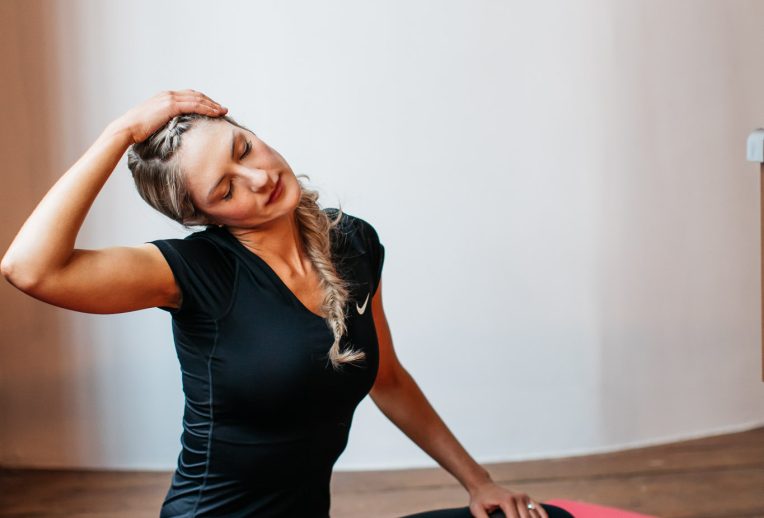It’s become a bit of a buzzword recently – but let me tell you there’s some pretty powerful science emerging to support mindfulness exercises for increasing focus, improving sleep and reducing stress! Not to mention it could also help people to get on top of their stress-triggered gut symptoms within a couple of months (thanks to the gut-brain axis, the two-way communication between the gut and the brain).
And now a 2020 study has shown that different types of mindfulness meditation could have different effects on our brain and behaviour…
In a nutshell: Different forms of mindfulness could have varying effects, but any type that works for you is likely to have a benefit. If you’re feeling stressed, try taking a break for some mindful breathing exercises – it could help to better manage negative feelings and give you a more positive future outlook.
What actually is ‘mindfulness’?
Mindfulness is essentially thought of as the ability to be fully present and ‘in the moment’, when you’re aware of your own thoughts and feelings, but without judgement and without being distracted or overwhelmed by what’s going on around us.
It has traditionally involved meditation, although recently a whole bunch of other types have become popular – from breathing exercises to yoga, and even mindful art or walking.
The Study
64 young adults, who didn’t already practice mindfulness, were split randomly into 4 groups to explore the effects of different mindfulness meditation techniques.
Each group (groups 1-4 below) all followed an 8-week mindfulness meditation programme with group meetings once a week for 60-75 minutes, held by one instructor. These meetings involved doing 2 sessions of their allocated meditation technique for 15 minutes each (30 minutes in total).
- Mindful breathing
This involved sitting and focusing their attention on breathing in their nose and how it feels, bringing the attention back to the breath if they found their minds wandering. An example prompt would be:
“Notice the sensations of the air passing through your nostrils while you inhale and exhale; if you find yourself caught up in a thought, an emotion, a fantasy or a memory, notice your mind has wandered away and, with a kind and nonjudgmental attitude, try to bring your focus back to breathing”
- Body scan
Here, they sat on a pillow or a chair, and focused on specific body parts one by one, from the toes up to the head, and were guided to simply notice each part as they went along. The focus wasn’t on the whole body, but one aspect at a time.
“Notice the sensations coming from your left foot, from the toes, the sole and the back of the foot, and the heel; if you find yourself caught up in a thought, an emotion, a fantasy or a memory, notice your mind has wandered away and, with a kind and non-judgmental attitude, try to bring your focus back to the sensations of your foot”
- Observing-thoughts meditation
This was also done sitting down. It involved being aware of and observing every thought, emotion and feeling that popped up in their heads, without judging or reacting to it, while staying calm and composed.
“Notice how every mental content originates, manifests and disappears in the mind; if you find yourself caught up in a thought, an emotion, a fantasy or a memory, and realize that you were absorbed in it, with a kind and nonjudgmental attitude try to bring your focus back to observe the next mental contents that may happen in the mind”
- Active control group
For comparison, the control group simply read and talked about a book on mindfulness during their weekly meetings, as well as reading for 20 minutes a day at home, without being asked to actually do any mindfulness exercises.
Researchers measured different factors via questionnaires, the week before and the week after the 8-week study period – including:
- Changes to their mindfulness abilities (how mindful they were in daily life)
- How they respond to distress or sadness (ruminative responses and how they reacted when they felt down)
- Their perspective of time (how much they focused on the past, present or future and if they approached it positively or negatively).
The Results
The participants all managed to stick to the mindfulness practice most days (avg. 6.76 days per week) and practiced at home for 16-20 minutes daily (avg. 18.19 minutes) – it looks like it is possible to squeeze in every day!
Was there a difference between techniques?
- All 3 groups doing the mindfulness programme for 8 weeks had better mindfulness skills compared to the control group- including being able to describe, not judge and not react to negative thoughts – as well as helping to reduce the tendency to fixate on negative emotions.
- Mindful breathing was found to be especially effective for helping participants reduce their tendency to fixate on negative emotions, and it was the only technique linked with having a more positive vision of the future. Why? Researchers suggested mindful breathing in particular works to distract people from thinking too deeply or repeatedly about negative thoughts, as you’re shifting your attention from everything in your head to your breath as a concrete focus point.
- Body scan could have a big influence on regulating our emotions, as the researchers suggested that body awareness is central to a number of psychological behaviour-change therapies.
Full disclosure: This is a pretty small study and it only included healthy young people (22 years old on average). 92% were female and they were all Italian Caucasian, so the results can’t necessarily be generalised to everyone. The findings are also based on participants’ self-reporting, so there could be a risk of bias. And as a relatively short study over just 8 weeks, longer mindfulness practice might be needed for even more positive effects.
The bottom line
All in all, the study shows any mindfulness meditation technique can come with benefits – including thinking more positively and being able to better manage negative thoughts without judgement. Focusing on your breath could be especially helpful if you tend to fixate on negative thoughts and events, or are finding it tricky to think positively about the future.
Whatever you choose, making it a daily habit and seeing how you feel after 12 weeks or more is key. Why not try starting with just 10 minutes a day of mindfulness, or simply taking short breaks to focus on your breath when you’re feeling stressed (aka mindfulness first aid!). If you’re after more guided breathing exercises, check out the Stress chapter of my book for practical step-by-step guides too.
How mindful are you?
Take the Five-Facet Mindfulness Questionnaire (FFMQ) that the participants did in the study and get a better idea of how mindful you are in daily life! Take the quiz














